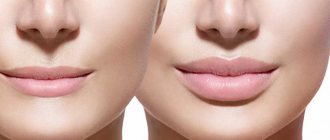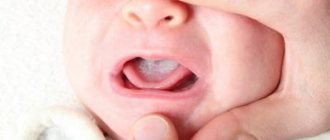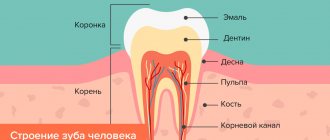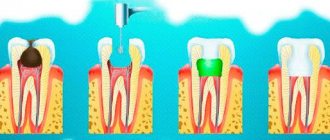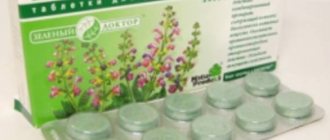Thrush or candidiasis is one of the most common diseases that occurs mainly in women. It is sometimes impossible to diagnose an infection on your own, since its signs may conceal sexually transmitted diseases that have similar symptoms. To determine the presence of candidiasis, you need to know the causes of thrush in women, its symptoms (see photo below) and external manifestations. To make an accurate diagnosis, it is recommended to contact a gynecologist who will conduct an examination and prescribe an examination.
The following provides information about what thrush is in women: symptoms, causes, treatment.
What is thrush and why does it occur?
The causes of thrush in women and how to deal with it are among the most pressing issues among patients susceptible to it. Candidiasis is a fungal disease, the occurrence of which is provoked by a pathogenic microorganism of the genus Candida. The disease is called thrush because of the specific consistency of the discharge, which has a curdled or milky liquid structure.
Candida fungus is also present in healthy women in small quantities. Its abnormal spread can be provoked by the following factors:
- weakened immune system;
- hormonal disbalance;
- long-term use of antibiotics;
- lack of personal hygiene;
- poor nutrition;
- wearing synthetic underwear;
- presence of diabetes mellitus.
A strong immune system inhibits the growth of pathogenic fungi. When chronic diseases and bacterial infections occur, the body's protective functions become weakened, which contributes to the development of candidiasis.
During pregnancy and menopause, a woman's body undergoes a radical restructuring, which leads to an increase in the concentration of glucose in the blood. Its presence in the body in large quantities provokes the growth of fungal microflora. The same thing happens in people suffering from diabetes and pathologies of the endocrine organs.
Antibacterial therapy destroys not only pathogenic bacteria, but also beneficial microflora that inhibits the growth of fungi.
Untimely replacement of intimate underwear and sanitary pads can also provoke the growth of Candida fungi.
The lack of a balanced diet leads to a weakened immune status and, as a result, the occurrence of thrush.
Synthetic underwear has poor breathability, which creates an increased moisture environment in the genital area. These are ideal conditions for the proliferation of microorganisms.
The causes of thrush in women can also lie in the presence of regular stressful situations and uncontrolled consumption of sweet products.
Causes of candidiasis on the lips
Thrush on the lips occurs due to the active proliferation of opportunistic fungi. Provoking factors can be various diseases and situations. The main reason is decreased immunity.
Other factors that a dermatologist or infectious disease specialist will tell you about are:
- diabetes mellitus, AIDS, cancer, digestive problems;
- neglect of personal hygiene;
- pregnancy (against the background of hormonal changes and weakened immunity);
- alcohol abuse;
- smoking;
- long-term use of antibiotics, oral contraceptives;
- age up to 3 years;
- elderly age.
How does a fungal disease manifest?
The first symptoms of thrush in women:
- discharge with a cheesy or liquid consistency;
- burning and itching in the genital area;
- pain during coitus;
- swelling and swelling of the external genital areas.
The list of what symptoms may occur with thrush in women can be supplemented with a mild sour odor. Damage to the mucous membrane is also possible due to increased local acidity.
Symptoms of chronic thrush in women may be mild or absent altogether. However, this does not mean that this form of the disease does not require treatment. Advanced candidiasis often provokes complications.
Therefore, chronic thrush in women without pronounced symptoms also requires treatment at home.
Symptoms of the disease
Candidiasis of the lips is not harmless and very insidious. Beginning its development in the oral cavity, the disease acts gradually and is not particularly disturbing. Unpleasant symptoms can appear only when the fungal infection has developed sufficiently. And it is better not to joke with this phenomenon; treatment must be started immediately so that the disease does not become chronic.
More interesting: Types of candidiasis
Candidiasis is divided into non-invasive and invasive. The latter is dangerous because fungal spores penetrate deep into the tissue and are more difficult to fight. The invasive form manifests itself with such signs as:
- hyperemia of the surface of the lips;
- redness of the mucous membranes;
- striation of integument;
- the mucous membrane is covered with a white coating, reminiscent of milk foam;
- deep cracks (jams) in the corners of the mouth;
- severe itching and burning of the affected surfaces;
- thickening and keratinization of the skin of the mouth;
- the appearance of cracks;
- pain and discomfort while eating.
Invasive candidiasis is a consequence of disorders in the endocrine system, most often it is associated with diabetes mellitus, hypothyroidism and ovarian dysfunction.
Thrush on the lips is accompanied by the formation of a white film on the outer surface of the lips, as can be seen in the photo on the Internet.
It is easily removed, revealing a painful bleeding surface underneath.
Modern medicine classifies lip candidiasis as many subspecies, but only two are directly related to lip damage: yeast erosion and yeast stomatitis.
With yeast erosion, cracks on the lips are covered with hard white crusts, which in turn move into the mouth, turning into a coating reminiscent of cottage cheese. It accumulates on the mucous membranes of the cheeks and tonsils. The surface affected by the fungus is swollen and red. When removing crusts and films, bleeding wounds open. When the form is advanced, dense plaque growths and painful ulcers form in the mouth. Oral candidiasis is characterized by a sour odor from the mouth.
Yeast stomatitis is characterized at the initial stage by the appearance of seizures in the corners of the mouth, but gradually cracks appear over the entire surface of the lips, and the disease spreads into the oral cavity, affecting the gums, palate and tongue. Next, the tonsils, tonsils and throat are affected. If left untreated, oral candidiasis can develop into another form of thrush, affecting the mucous membranes of internal organs.
How to treat thrush in women
Treatment of thrush includes the following measures:
- taking oral tablets;
- use of local drugs;
- the use of baths and douches;
- compliance with diet therapy.
An integrated approach to therapy will allow you to achieve a quick therapeutic effect and avoid complications such as chronic thrush in women, which is more difficult to treat.
Oral medications for thrush
Thrush in women requires timely treatment with oral medications in the form of tablets. The most effective antimycotics for oral administration include:
- "Fluconazole";
- "Diflucan";
- "Orungal."
The first two drugs are based on fluconazole, an active synthetic substance to which Candida fungi are highly sensitive. In the acute form of the disease, a single dose of fluconazole is indicated, the dosage of which is 150 mg. If necessary, repeat the appointment every other day. Fluconazole preparations should be used with caution in patients suffering from renal or liver failure.
"Orungal" is an effective antimycotic based on itraconazole. The daily dose is 400 mg, divided into two doses. The duration of treatment is one day. Orungal is also taken according to another treatment regimen: 200 mg once a day for three days.
Probiotics may be prescribed as additional therapy for thrush:
- Gynoflor E;
- Ovestin;
- Rela Life.
The drugs allow you to restore the balance between pathogenic and beneficial microflora of the vagina.
Vaginal medications for the treatment of candidiasis
Sometimes the use of oral medications alone is not enough and it may be necessary to use topical medications, which include ointments, suppositories and vaginal tablets.
Treatment of thrush on the lips
Before prescribing treatment, the doctor will conduct an accurate diagnosis. This will help make sure that the culprit of the problem is thrush on the lips (herpes, psoriasis, dermatitis), and not another disease. In addition to the visual examination, the doctor will need laboratory test results.
In the case of candidiasis on the lips, you need to undergo several tests, since the fungus can simultaneously affect the oral cavity, digestive tract, and urinary system.
During an examination of the oral cavity, a white coating on the gums and tongue, wounds and cracks will be noticeable. An endoscopy is performed to check the stomach, and appropriate tests are taken to check the intestines for the presence of fungi.
After confirming the diagnosis, the doctor selects a treatment regimen taking into account the age, condition of the patient and the course of the disease. Medicines can be prescribed externally (gels, ointments, sprays, solutions and creams) and internally (tablets, capsules).
The ointment lingers well on the surface of the lips, quickly eliminating the unpleasant symptoms of thrush. After a couple of days of use, the rash and itching will decrease, but this is not a reason to stop treatment.
The course lasts up to two weeks; it is necessary to complete the treatment in order to completely get rid of the fungus and avoid relapses. The ointment heals cracks and wounds. The following drugs will be effective: candide, nystatin, pimafucin, zalain, clotrimazole, fluconazole, miconazole, gynofort.
Tablets that act systemically are taken orally. Sometimes the doctor recommends crushing the tablet into powder, mixing it with Vaseline and applying it as a medicine to the site of the disease.
Effective tablets against fungus:
- pimafucin. Can be used regardless of food. Course – up to 1 week. The drug is approved during pregnancy. Used for the treatment and prevention of fungus on the lips, intestines, genitourinary system, etc.;
- fucis. Often prescribed for the prevention of various types of thrush, including candidiasis on the lips. The package contains 1 tablet, which is enough to take for recovery. The active ingredient of the drug affects the body for a week, after which it is eliminated naturally;
- medoflucon. The medicine works well against any fungal infection, including Candida fungus. Available in different forms, but adults are most often prescribed in capsules. Newborns are prescribed medoflucon solution intravenously. During pregnancy, it is prescribed with caution, strictly monitoring the condition of the expectant mother;
- fluzon. Often prescribed by doctors to prevent candidiasis. The drug is able to eliminate candidiasis of any localization;
- itracon. An effective drug for various types of mycosis, including candidiasis on the lips. Taken orally after meals. Possible adverse reactions: nausea and vomiting, headache, urticaria, arrhythmia. The drug is prescribed to pregnant women with caution. The medicine is not prescribed to nursing mothers.
Treatment of candidiasis in chronic form
Treatment of chronic thrush in women is most often carried out using the following drugs:
- "Pimafucin" (tablets and suppositories);
- Nizoral (tablets and ointment);
- "Clotrimazole" (tablets and gel).
If in the acute form of the disease a single dose of oral medications is sometimes sufficient, then in case of recurrent thrush you will need a longer and more complex course of treatment with mandatory adherence to diet therapy and the intake of probiotics.
Vaginal suppositories
The type of medicine for external use is considered the most gentle and can stop the disease at the very beginning of its manifestation.
Clotrimazole
Vaginal suppositories with antifungal action.
Instructions for use
Composition : Clotrimazole 100 mg (active substance), solid fat.
Indications for use : Genital infections caused by yeast fungi of the genus Candida (candidal vulvitis, vulvovaginitis).
Directions for use : The suppository is administered once a day, at night, before bedtime. The average course of treatment is 6 days.
Contraindications : Individual intolerance to the components of the drug, first trimester of pregnancy, menstrual period (for this dosage form).
McMirror
Vaginal suppositories with antimicrobial effect. Used to treat gynecological diseases.
Instructions for use
Ingredients : Nifuratel, nystatin (active substances), dimethicone.
Indications for use : Vaginal candidiasis, bacterial infections in the urogenital area, urogenital trichomoniasis, chlamydial infections.
How to take : Macmiror suppositories are used for 8 days, using 1 suppository at night.
Contraindications : Hypersensitivity to nystatin and nifuratel.
Pimafucin
Vaginal suppositories with antifungal action for topical use in gynecology.
Instructions for use
Ingredients : Natamycin (active substance), cetyl alcohol, solid fat, sorbitan trioleate, polysorbate, sodium hydrocarbon, adipic acid.
Indications for use : Vaginitis, vulvitis, vulvovaginitis caused by fungi of the genus Candida.
Method of administration : The suppository is inserted into the vagina in a lying position, as deep as possible, 1 time per day at night. The average course of treatment is 3-6 days.
Contraindications : Hypersensitivity to the components of the drug.
Nystatin
Vaginal suppositories with antiseptic and antimicrobial effects for the treatment of gynecological diseases.
Instructions for use
Ingredients : Nystatin (active substance), butylocoinizole for medical purposes, butylated hydroxytoluene, edible citric acid, vaseline oil, semi-synthetic glycerides.
Indications for use : Diseases caused by fungi of the genus Candida.
Directions for use : 1 suppository is inserted deep into the vagina 1-2 times a day. The duration of treatment is 10-14 days.
Contraindications : Hypersensitivity to the drug.
Livarol
Vaginal suppositories with antifungal action.
Instructions for use
Ingredients : Ketoconazole (active substance), polyethylene oxide 1500, butyloxyanisole, polyethylene oxide.
Indications for use : Vaginal candidiasis. Used to prevent fungal infections while taking antibiotics and other drugs that disrupt the natural microflora of the vagina.
How to take : 1 suppository per day is inserted into the vagina at night, before bed. The duration of the course of treatment is 3-5 days. For chronic thrush - 7-10 days.
Contraindications : Individual intolerance to ketoconazole and other components of the drug, first trimester of pregnancy.
Zalain
Local antifungal suppositories.
Instructions for use
Ingredients : Sertaconazole nitrate (active component), vitepsol type H19, suppositir type NAI 50, colloidal anhydrous silicon dioxide. Indications for use : Infections of the vaginal mucosa caused by fungi of the genus Candida
(vulvovaginal candidiasis).
Directions for use : Intravaginally, once. One vaginal suppository is inserted deep into the vagina, lying on your back, before bed. If symptoms persist, the drug may be re-used after 7 days.
Contraindications : Hypersensitivity to the components of the drug.
Preventative measures to prevent recurrence of thrush
Prevention of thrush in women and pregnant women must include the following rules:
- maintaining personal hygiene;
- refusal of synthetic underwear;
- the use of antimycotics and probiotics after antibacterial therapy;
- timely change of sanitary pads and tampons (at least every 4 hours);
- moderate consumption of sweet foods.
To avoid relapses of thrush, it is necessary to carry out treatment at the first symptoms, both in the woman and her partner.Save
Save
Treatment in men
To combat candidiasis in representatives of the stronger sex, the following dosage forms are used:
- Tablets: Fluconazole (analogue of Flucostat), Pimafucin, Ketoconazole);
- Ointment or cream: Ecodax, Pimafucin, Clotrimazole);
- Mouth rinse solutions (borax in glycerin, Candide).
It should be remembered that you need not only to use an effective remedy for thrush for men, but also to follow a special diet. This will make it much easier for the body to cope with the fungus.
Routes of infection
Fungus under a microscope
In most cases, the cause of the disease is a change in one’s own flora and a sharp increase in the number of Candida fungi, although sometimes infection from the outside is possible.
A weakened immune system is the best time to increase the Candida population. Microorganisms begin to infect epithelial cells, spreading to the surface and then penetrating inside. But even when the protective function is restored, the proper balance cannot be achieved, so the fungus continues its destructive effect.
After treatment, a relapse of the disease is likely. This is due to the fact that as soon as the immune system is suppressed again, the Candida fungus immediately begins to reproduce, appearing on the lips and other mucous membranes, which requires repeated treatment.
Preventive actions
Having analyzed the symptoms and treatment of oral thrush in men, it is necessary to mention the prevention of this disease.
First, you should carefully monitor your oral hygiene: brush your teeth daily, change your toothbrush once a month, and visit the dentist regularly. Secondly, it is recommended to observe some nuances in nutrition, for example, abuse of alcohol and carbohydrate foods provokes the occurrence of candidiasis. Thirdly, if long-term treatment with antibiotics or immunosuppressants is indicated, then probiotics (Linex, Bifiform, etc.) and antifungal agents (Fluconazole, Metrogyl) should be prescribed simultaneously to protect the body.
People who use inhaled corticosteroids daily are advised to rinse their mouth with a baking soda solution after each use. Last, but nevertheless most important, is the therapy or correction of a chronic background disease, which suppresses the immune system and provokes the occurrence of thrush in most patients.
Thrush with bleeding
When a curdled discharge appears due to thrush, it seems that everyone understands what it is and why it arose, but it is a completely different matter when there are blood impurities in it. Let's figure out where the blood streaks come from.
As you know, the vagina is covered with a mucous membrane that has blood vessels. The vagina is connected with the work of all organs of the reproductive system, and if a failure occurs in any one place, then it will certainly affect other parts of the genital area.
Let's look at the main reasons why spotting may appear due to thrush:
- mechanical damage. You can reason logically: with thrush, an inflammatory process appears, burning, itching, which makes the blood vessels more fragile and vulnerable to injury. This is why blood impurities are a common occurrence with candidiasis. In fact, a variety of factors can lead to damage to the mucous membrane: sexual contact, examination by a gynecologist, washing, scratching;
- presence of concomitant diseases. Candidiasis can occur simultaneously with sexually transmitted diseases, in which case waste products of not only fungi, but also other pathogenic bacteria will appear in the discharge. For example, if a woman suffers from bacterial candidiasis, then often with this condition the blood vessels of the vagina begin to burst and therefore blood gets into the cheesy discharge;
- use of certain medications. Some vaginal suppositories have side effects such as weakening of blood vessels.
Separately, I would like to say about advanced forms of candidiasis. Bloody discharge is not always a consequence of other diseases; it happens that thrush itself can cause this symptom.
A feature of chronic candidiasis is that the pathogenic fungal infection penetrates not only the vaginal epithelium, but is also able to penetrate further, reaching connective tissue and blood vessels. When a pathogen is located near a blood vessel, it damages it and causes hemorrhage.
Diagnostics
Usually, to confirm the diagnosis of thrush, examining a smear from the affected area under a microscope is sufficient. However, it is very important to identify the underlying causes of thrush. Therefore, patients often require a general examination, including to identify other infections.
Diagnosis of thrush in men
If you notice the first symptom of candidiasis, you should consult a doctor to determine the diagnosis. Diagnosis of candidiasis includes:
- General examination of the patient and the site of activation of the disease.
- Taking a smear from the penis and areas of the skin that are characterized by the manifestation of the disease.
- Microscopic examination of stained and unstained smears.
- A full range of patient examinations.
Tests are taken from the urethra in the morning before urination. A flesh smear can be taken at any time, but not after a hygiene procedure.
It is also necessary to check not only the man with symptoms of candidiasis, but also his sexual partner, in order to exclude the possibility of re-infection. Once the diagnosis is made, appropriate treatment will be required and what it should be is described below.
What measures should be taken
To avoid the appearance of thrush on the lips of a child and an adult, you need to follow preventive measures. Candidiasis, although considered an unpleasant disease, can be easily prevented.
Experts recommend following good oral hygiene. No need to use someone else's toothbrush. Despite the fact that antibacterial rinses perform their function well, they destroy the microflora of the mouth - it is better to use them as little as possible. After such remedies, fungi and bacteria will multiply at tremendous speed.
There is no need to put off going to the dentist if there are any prerequisites for the disease. It is necessary to treat teeth in time and remove stones. This will keep your mouth healthy. You need to reconsider your diet. It must be correct and balanced. Antibiotics should be taken only as prescribed by a doctor, without exceeding the dosage or prolonging the course on your own. Ideally, you need to give up bad habits. The immune system should be strengthened with vitamins and exercise.
These rules will help not only prevent the development of thrush on the lips, the photo of which disgusts many, but also other diseases of this type.
To prescribe effective remedies for oral candidiasis, you need to contact a dentist, mycologist or infectious disease specialist. You can also visit a therapist to provide primary care. Additional examination by an allergist or endocrinologist may be required.
The specialist conducts diagnostics and makes an accurate diagnosis. After determining the type of pathogen and the nature of the fungal infection of the oral mucosa, drug therapy is prescribed.
Thrush in the mouth of an adult in the initial stages of progression can be stopped with the help of special antimycotic lozenges. Among the most effective drugs are Diflucan, Lysozyme and Clotrimazole.
Local processing
Solutions to relieve symptoms and stop the progression of an infectious disease are very popular. Among the most effective against oral candidiasis are Amphotericin and Decamine. The oral cavity can be lubricated with brilliant green or Lugol, which also helps relieve the symptoms of candidiasis.
Antimycotic aerosols containing hexoral or chlorhexidine are highly effective. Swallowing such drugs is unacceptable, so they should be used with caution.
You can treat the mucous membrane with solutions such as baking soda and borax. These remedies eliminate the acidic environment, replacing it with an alkaline one, which helps relieve the symptoms of the disease and prevents its progression. For these purposes, you can use potassium permanganate. The number of procedures per day should be at least five. The course of therapy depends on the degree of disease progression.

